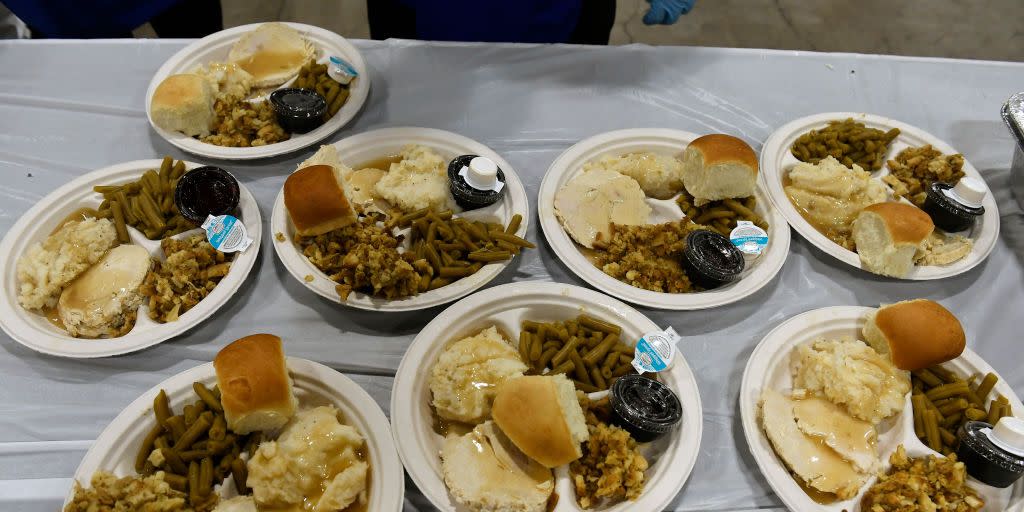The CDC Released More Recommendations For Thanksgiving Amid The COVID-19 Pandemic

Update, November 17, 2020: Since our last update, COVID-19 cases have continued to skyrocket in the United States, topping more than 150,000 new cases per day several times in the last week. The CDC has also continued to provide updates to its recommendations for having the safest Thanksgiving gathering possible as the holiday is right around the corner.
The CDC recommends, as always, keeping your gatherings small and/or virtual, with the safest and most recommended option being limited in-person interaction to those within your household. In this update, they clarify that "your household is anyone who currently lives and shares common spaces in your housing unit," such a family members or roommates. They add that "college students who are returning home from school for the holidays, should be considered part of different households."
The entire CDC post is worth a read, as is this interview from CBS with Dr. Anthony Fauci who echoes their advice, noting that even if you test negative for COVID-19 and wear a mask, there will still always be a risk of contracting COVID-19 at any gathering. He argues people should then consider the "risk/benefit ratio" of seeing family and friends in person this holiday, even if everyone quarantines and wears a mask.
You can read more advice in our previous updates below as well as directly from the CDC here.
Update, November 6, 2020: Thanksgiving is right around the corner and you probably have already started making plans for what your holiday will look like. In addition to the guidelines they issued in early October, the Centers For Disease Control and Prevention detailed some additional guidance for making your holiday as safe as possible during the COVID-19 pandemic.
In this update, they urged people to keep a few factors in mind when planning a Thanksgiving gathering including the length of time (shorter is always better!), where guests are coming from (traveling is not advised, especially to or from high-risk areas), the location (outside is basically always better), and the behaviors of everyone attending (everyone should wear a a mask when they are not eating or drinking and keep their distance from those who not in their household).
They also provided detailed tips for before, during, and after your holiday gatherings. These guidelines apply to all fall and winter gatherings, they said, including Diwali, Thanksgiving, Día de la Virgen de Guadalupe, Hanukkah, Kwanzaa, Christmas, and New Year’s. All the guidelines are worth reading in full, especially if you're traveling or hosting this year, but some of the most helpful additional tips are:
Get your flu shot.
Stay home as much as possible two weeks before and after the gathering.
Consider getting tested for COVID-19 before and after if that's widely available in your area.
Bring extra masks, hand sanitizer, and other safety items with you.
Do not participate in gatherings if you have tested positive, have had confirmed exposure, or have symptoms of COVID-19.
As they noted, these guidelines are meant to supplement—not replace—any local guidance from public health officials, and you should continue to follow the standard social distancing and mask measures that have been recommended for months. You can read the entire post in full here and read the original post below for continued guidance around Thanksgiving.
Original, October 1, 2020: As we get closer to the winter holidays, it's important to start planning what celebrations will look like amid COVID-19. The Centers For Disease Control and Prevention recently issued suggestions for how to safely celebrate some of the upcoming holidays including Thanksgiving.
The CDC acknowledged at the very beginning of its guidelines for Thanksgiving that this is a time when many people travel to visit family and friends. They note that traveling increases your chance of getting and spreading coronavirus, but also shared some low, moderate, and higher risk activities that you should consider—or reconsider—during the holidays.
For example, they group at-home activities into the low risk category, such as "having a small dinner with only people who live in your household" and watching parades and sporting events at home. They also consider dropping off Thanksgiving dinner to people in a no-contact way to be low-risk.
When it comes to moderate risk, the CDC considers having a small outdoor dinner with other community members and visiting outdoor pumpkin patches to be in this category. This is probably not a surprise, but unfortunately for many of us who typically enjoy a big feast on the day, the CDC includes attending large indoor gatherings, such as big family dinners as high risk. They also include attending crowded outdoor races (likely a reference to Turkey Trots), and shopping in crowded stores, as high risk.
No matter what type of celebration you're planning on having, you should keep these CDC guidelines in mind as well as follow best practices you've heard throughout the pandemic (such as wearing your mask, keeping a distance of six feet or more, and washing your hands, to name a few). We covered more safety tips for Thanksgiving here and you can read the entirety of the CDC's recommendation here.
You Might Also Like

